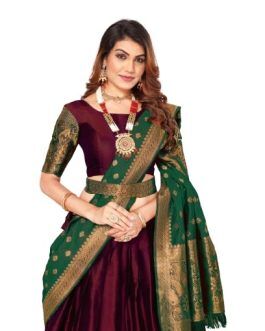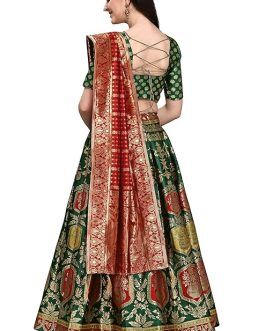Saree Stitching Guide
A saree is one of the most graceful traditional outfits. It highlights beauty, elegance, and timeless style.
Perfect saree stitching enhances comfort, fitting, and confidence in every movement.
A well-stitched saree blouse adds charm to your overall look.
This guide helps you understand everything about saree stitching in detail.
1. Choosing the Right Fabric
Fabric selection decides your saree’s final look and comfort. Cotton offers breathability and comfort for daily wear. Silk adds luxury and shine for festive occasions. Georgette gives a light, flowy, and elegant appearance. Chiffon is ideal for women who love a soft drape. Crepe gives a stylish, wrinkle-free texture. Net fabric works best for designer or bridal sarees. Always choose fabric according to the occasion and season.
2. Selecting the Perfect Saree Blouse Design
The blouse design makes or breaks your saree style.
Choose necklines that flatter your face and shoulders.
Boat necks add sophistication and grace.
V-neck designs create an elongated and modern look.
Sweetheart necklines look perfect for festive sarees.
Backless or deep-back blouses are great for parties.
High-neck blouses give a regal and elegant appearance.
Sleeve length also impacts the style and comfort.
Experiment with puff sleeves, ruffles, or sleeveless designs.
3. Accurate Body Measurements
Accurate measurements are essential for perfect stitching.
Measure bust, waist, shoulder, armhole, and sleeve length carefully.
Use a measuring tape and note sizes correctly.
Avoid tight or loose measurements to maintain comfort.
A well-fitted blouse enhances posture and style.
Tailors rely completely on your correct measurements.
Always double-check before giving final stitching instructions.
4. Understanding Saree Petticoat Styles
A petticoat supports and shapes the saree drape.
Cotton petticoats are ideal for casual cotton sarees.
Satin petticoats add shine and smooth flow under silk sarees.
Fish-cut petticoats provide a slim, fitted modern look.
Choose petticoat color similar to saree base shade.
The waistband should fit comfortably without tightness.
Length should allow saree fall just above the floor.
5. Stitching Techniques for Saree Blouses
Different stitching styles offer unique fitting experiences.
Princess-cut blouses provide a structured, body-hugging shape.
Dart-style stitching gives a simple and clean finish.
Padded blouses add comfort and support.
Lining fabric improves durability and softness.
Always select good-quality threads and lining material.
Professional tailors use overlock stitching to prevent fraying.
Proper finishing ensures long-lasting stitching results.
6. Modern Saree Stitching Trends
Modern saree stitching combines tradition with innovation.
Pre-stitched sarees are becoming popular for easy wear.
They save time and create perfect pleats instantly.
Blouses now include zipper backs for convenience.
Off-shoulder and halter neck styles are trending.
Contrast borders and embroidery elevate the saree design.
Adding tassels or latkans enhances beauty effortlessly.
Fusion sarees blend Indian tradition with western creativity.
7. Saree Drape and Fit Perfection
The saree drape must complement your body shape.
Practice pleating neatly for a balanced look.
Pin saree securely without damaging the fabric.
Choose saree length according to your height.
A well-fitted blouse supports perfect saree draping.
Petticoat flare should help in smooth movement.
Tight blouses restrict comfort and flexibility.
Loose stitching creates an unflattering appearance.
Check fitting before wearing it to an event.
8. Embroidery and Decoration Tips
Embroidery adds elegance and luxury to saree blouses.
Zari work suits weddings and grand occasions perfectly.
Mirror work adds sparkle and fun to festive looks.
Thread embroidery gives soft, sophisticated charm.
Beadwork or sequin designs attract modern fashion lovers.
Choose embellishments according to event formality and theme.
Avoid over-decoration for daytime or office wear.
Proper stitching ensures decorations stay secure and neat.
9. Saree Care After Stitching
After stitching, proper saree care is very important.
Always dry clean embroidered or silk sarees carefully.
Store sarees in cotton covers for protection.
Avoid plastic bags that cause fabric moisture damage.
Iron sarees with mild heat or steam press.
Do not hang heavy sarees for long periods.
Fold them properly to prevent fabric stretching.
Keep them away from direct sunlight and humidity.
10. Common Saree Stitching Mistakes to Avoid
Never ignore correct measurement before stitching.
Avoid mixing different fabric textures without balance.
Do not use cheap threads or poor-quality lining.
Always check fitting before final stitching approval.
Avoid over-tightening shoulder or sleeve areas.
Don’t skip inner lining for transparent blouses.
Choose designs that match your comfort and confidence.
Follow stitching instructions given by expert tailors.
11. Why Professional Stitching Matters
Professional tailors understand saree fitting science deeply.
They adjust measurements based on your body type.
Experienced tailors know how to highlight curves gracefully.
They ensure neat finishing and accurate fitting.
Custom stitching saves time during saree draping.
Tailor-made sarees always look more elegant and polished.
It is worth investing in professional saree stitching.
12. Final Touch and Accessories
A perfect saree needs matching accessories for completion.
Select jewelry that complements the saree color.
Add bangles, earrings, and necklace for festive appeal.
A decorative waist belt enhances the overall saree shape.
Choose a matching clutch or potli bag for elegance.
Footwear should match saree color and occasion type.
Always carry confidence; it’s your best accessory.
About TheCustomSuits
At TheCustomSuits, we offer expert saree stitching with perfect fitting and design.
We create custom styles tailored to your unique personality.
Our skilled team ensures comfort, precision, and premium finishing.
Get your dream saree stitched with perfection at TheCustomSuits today.





Comments
Post a Comment